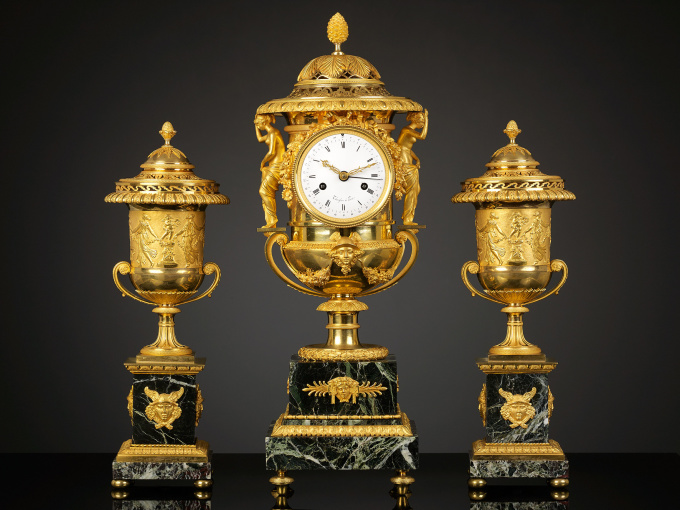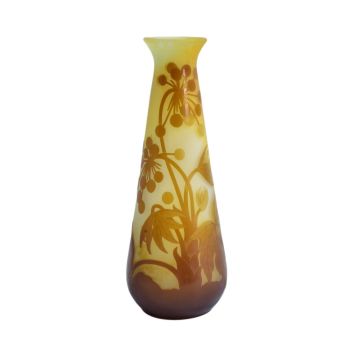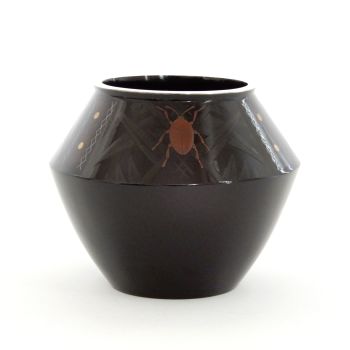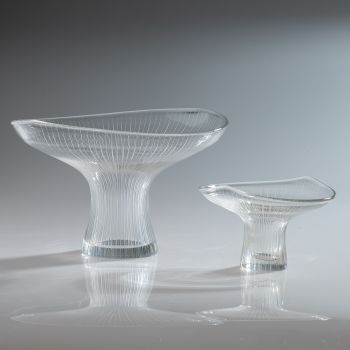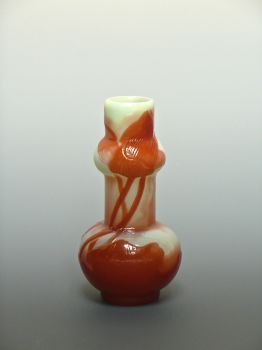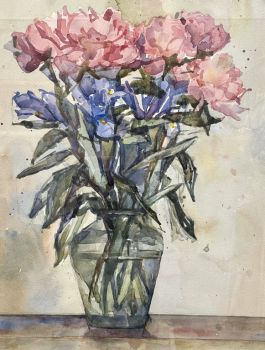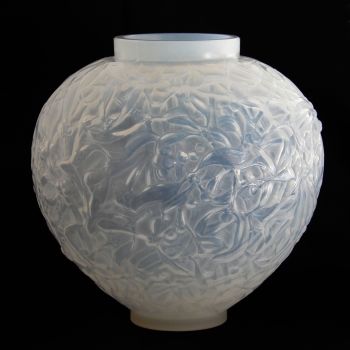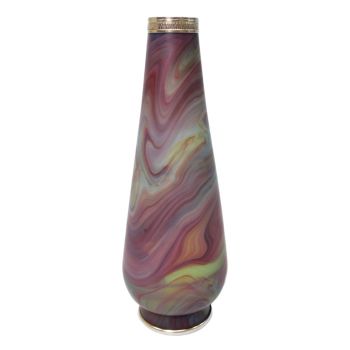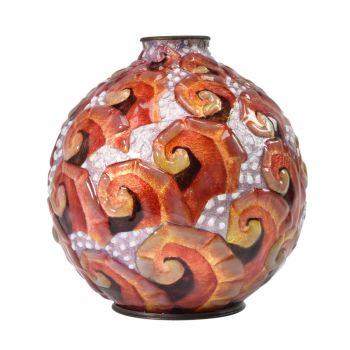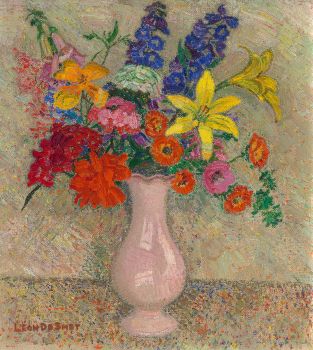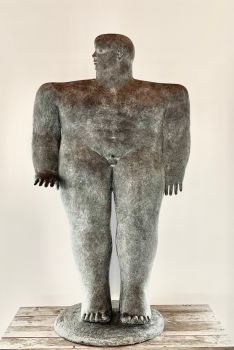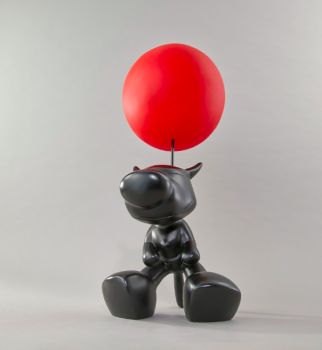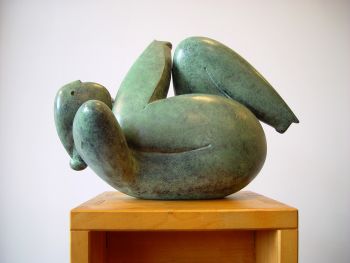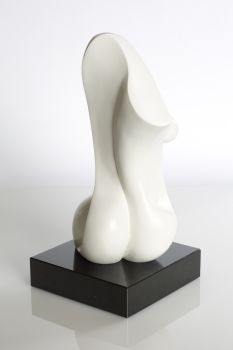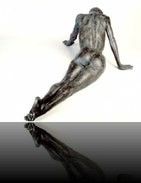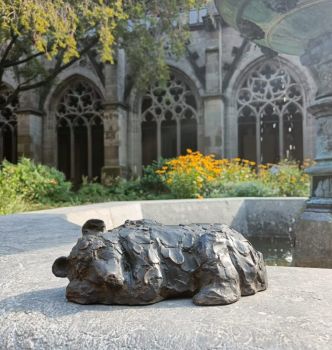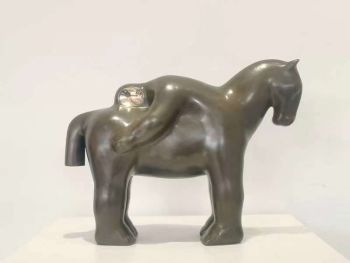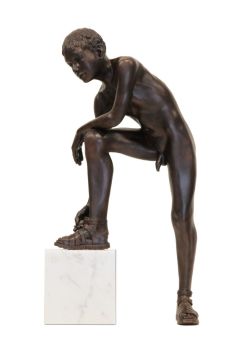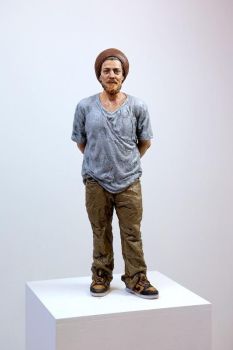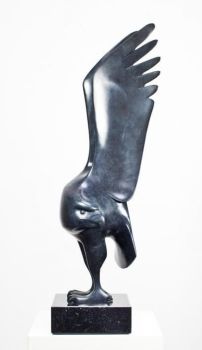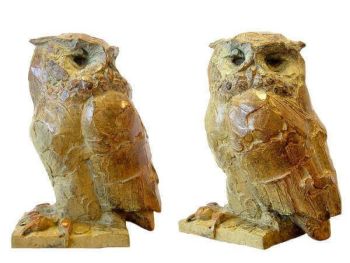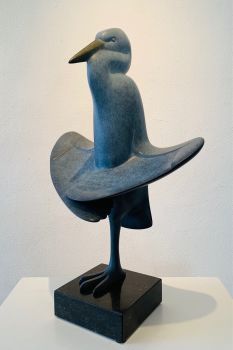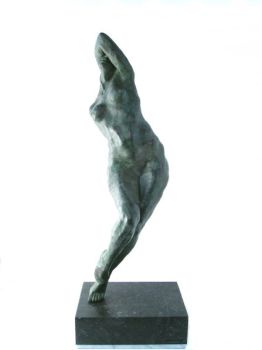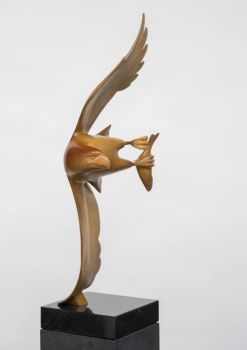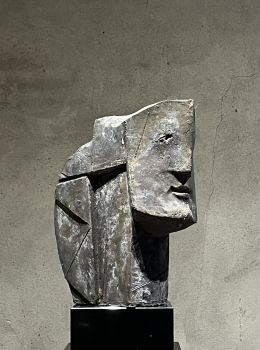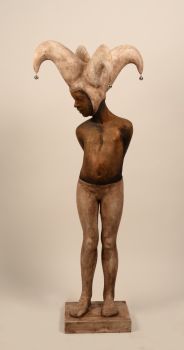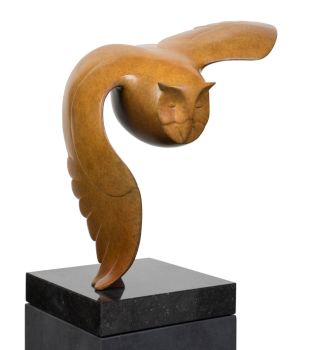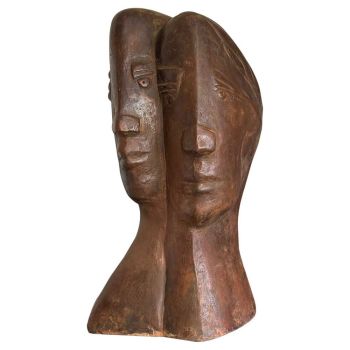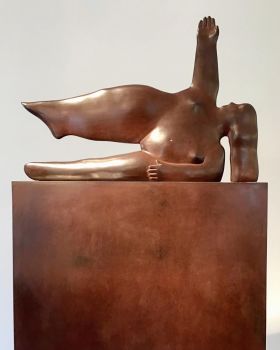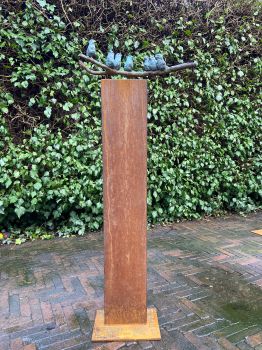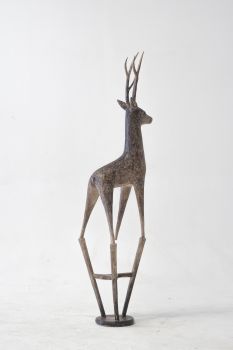An Empire Suite of an Urn-shaped Mantel Clock and Two Vases 1810
Pierre-Philippe Thomire
MarmoPietraBronzoMetallo
60 ⨯ 21 ⨯ 21 cm
Attualmente non disponibile tramite Gallerease
- A proposito di opere d'arteAn exceptionally large and beautiful set of two ornamental vases and a mantel clock, after a model by Thomire, and with a Clockwork by Thonissen.
Clockwork
8-day going train, striking train and central date indication. The white enameled dial shows Roman numerals for the hours and stripes for the minutes. The outer ring indicates the date (1-30) in Arabic numerals.
Signed on the dial: Thonissen à Paris
Thonissen worked from the Rue Mandar from 1806 to 1840.
The mantel clock is shaped like a “de Medici” vase and is flanked by two female figurines “à l ‘antique” who support the lid with their right hand. The, partly openwork, lid is decorated with stylized palmettes and a pine-cone finial. The outside of the dial is decorated with a beaded edge and a garland pending from the top. Underneath the dial the vase has a male portrait with a winged helmet, presumably Mercury or Hermes, flanked by floral garlands. The clock is resting on a double marble plinth with four bun-shaped legs. The pedestal is decorated with portraits flanked by stylized palmettes and an architrave with leaf motifs.
The ornamental vases have the same shape as the mantel clock, but are much simpler in their ornamentation. The body is decorated with a relief of dancing priestesses and putti. A comparable set can be found in the Duesberg Museum in Mons, Belgium.
Pierre-Philippe Thomire (1751-1843) was one of the most famous bronze casters and ciseleurs during the French Empire era. Although trained as a sculptor, Thomire chose to follow in his father’s footsteps, and take up the more lucrative profession of ‘fondeur’. He became the leading bronze artist of the late 18th and early 19th century. Thomire was trained by Gouthière and afterwards founded his own company that manufactured ornamental bronzes for furniture. Later, Thomire became assistant to Duplessis, the director of the Manufacture de Sèvres. After the death of Duplessis in 1783, Thomire turned once again to bronze casting and manufactured bronze fittings for porcelain artefacts. In 1809 Thomire was awarded the title “Ciseleur de l’Empereur”. - A proposito di opere artistaPierre-Philippe Thomire è nato nel 1751 ed è diventato uno dei più famosi fonditori di bronzo e ciseleurs durante l'era dell'Impero francese. Sebbene avesse ricevuto una formazione come scultore, Thomire scelse di seguire le orme di suo padre e intraprendere una professione più redditizia di "Fondeur", o fonditore. Divenne il principale artista del bronzo tra la fine del XVIII e l'inizio del XIX secolo. Thomire fu addestrato da Gouthière, ma presto fondò il proprio laboratorio per la produzione di bronzi ornamentali per mobili. Più tardi Thomire divenne assistente di Duplessis, il direttore della Manifattura di Sèvres. Dopo la morte di Duplessis nel 1783, Thomire si occupò ancora una volta di fusioni in bronzo, ora producendo accessori in bronzo per manufatti in porcellana. Nel 1809 gli fu conferito il titolo di "Ciseleur de l'Empereur". Sappiamo che la sua firma è: THONISSEN A PARIS. Morì nel 1843.
Artwork details
Categoria
Soggetto
Stile
Materiale e Tecnica
Colore
Related artworks
Artista Sconosciuto
Set of eight gouache drawings1799 - 1801
Prezzo su richiestaRobert Schreuder Antiquair
Artista Sconosciuto
Set Franse Empire Pendules / Empire Lectura penduleearly 19th
Prezzo su richiestaKuipers Kunst & Antiek
Artista Sconosciuto
Braccialetto di diamanti del XVIII secolo con intagli di 2000 anni1790
€ 23.000Adin Fine Antique Jewellery
 A cura di
A cura diDanny Bree
1 - 4 / 15Artista Sconosciuto
UN RARO SADELI INDIANO COMPLETO DI LAVORO E SCRITTURA INTARSIATI1800 - 1850
Prezzo su richiestaZebregs & Röell - Fine Art - Antiques
Artista Sconosciuto
Japanese transition-style lacquer coffer 1640 - 1650
Prezzo su richiestaZebregs & Röell - Fine Art - Antiques
1 - 4 / 24Artista Sconosciuto
Japanese art deco lacquervase with Scarab beetle motif1920 - 1950
Prezzo su richiestaDille Art
1 - 4 / 24- 1 - 4 / 24

